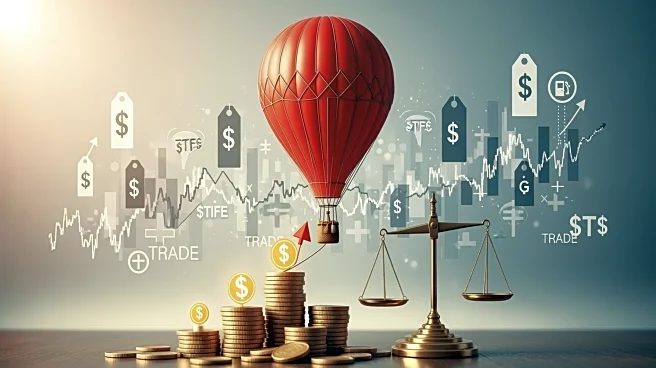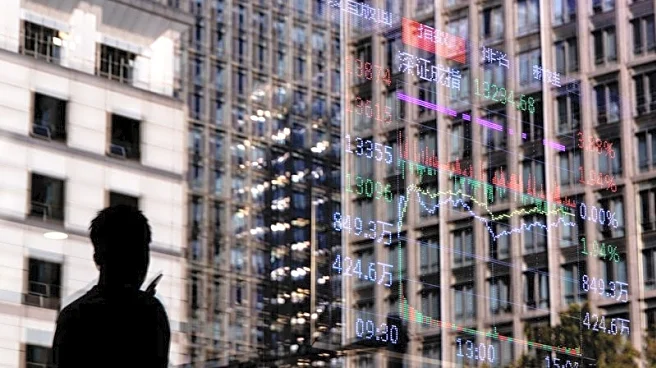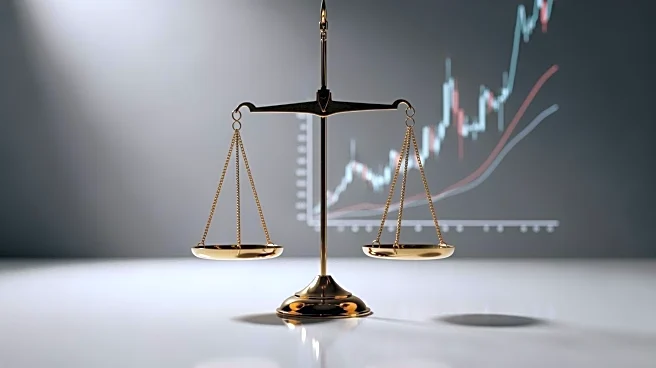What's Happening?
The U.S. economy is teetering on the brink of a recession, with California and New York playing pivotal roles in determining its fate, according to Moody's Analytics chief economist Mark Zandi. In recent
social media posts, Zandi highlighted that states accounting for nearly one-third of the national GDP are either in recession or at high risk. California and New York, which together represent over 22% of the U.S. GDP, are currently 'treading water' but could easily tip the scales. Michigan has been moved to the recessionary list due to ongoing tariff impacts on its automotive industry. The national economy is not yet in recession, but it is struggling, as evidenced by stagnant job growth and sectoral job losses in construction, manufacturing, and technology.
Why It's Important?
The economic health of California and New York is crucial due to their significant contributions to the U.S. GDP. A downturn in these states could lead to a national recession, affecting industries, employment, and public policy. The ongoing trade war and restrictive immigration policies are hindering growth, while advancements in artificial intelligence are providing some economic relief. The Federal Reserve's potential rate cuts could offer a temporary boost, but rising inflation and consumer stress pose challenges. The economic outlook is uncertain, with potential impacts on federal policies and the upcoming holiday season.
What's Next?
The Federal Reserve may consider further rate cuts to stimulate the economy, especially if inflation continues to rise. Economic indicators are on hold due to the government shutdown, but the Labor Department's recent consumer price index release suggests more rate cuts could be forthcoming. Economists predict a dramatic slowdown in the fourth quarter, exacerbated by consumer stress and tariff impacts. The holiday season may be particularly challenging, with rising delinquencies and a fragile labor market.
Beyond the Headlines
The broader implications of a recession in California and New York include potential shifts in federal economic policy and increased scrutiny on trade and immigration policies. The role of artificial intelligence in bolstering investment and household wealth highlights the intersection of technology and economic resilience. Long-term, the U.S. may need to reassess its global economic strategies to mitigate recession risks.













